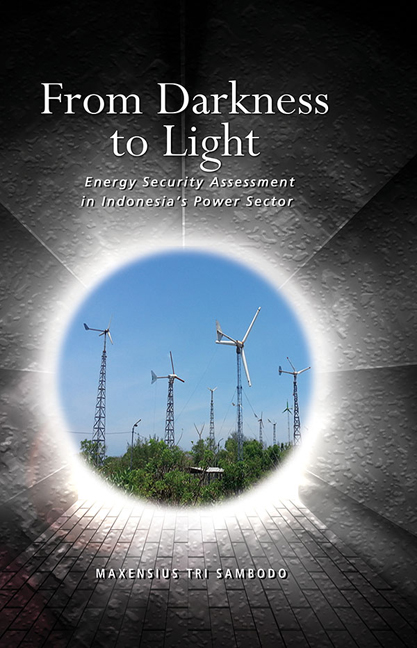Book contents
- Frontmatter
- Dedication
- Contents
- List of Tables
- List of Figures
- List of Abbreviations
- Acknowledgements
- 1 Introduction
- 2 A Historical Overview of the Electricity Sector
- 3 Electricity Production and Consumption: Boom and Bust
- 4 Economic Crisis and Its Impact on the Power Sector
- 5 Electricity and Economic Growth
- 6 Electricity and the Environment
- 7 The Rural Electricity Programme in Indonesia
- 8 Conclusion
- Index
- About the Author
3 - Electricity Production and Consumption: Boom and Bust
Published online by Cambridge University Press: 05 July 2016
- Frontmatter
- Dedication
- Contents
- List of Tables
- List of Figures
- List of Abbreviations
- Acknowledgements
- 1 Introduction
- 2 A Historical Overview of the Electricity Sector
- 3 Electricity Production and Consumption: Boom and Bust
- 4 Economic Crisis and Its Impact on the Power Sector
- 5 Electricity and Economic Growth
- 6 Electricity and the Environment
- 7 The Rural Electricity Programme in Indonesia
- 8 Conclusion
- Index
- About the Author
Summary
THE PRODUCTION SIDE
This chapter investigates electricity production and consumption in Indonesia since the First Five-Year Development Plan (Rencana Pembangunan Lima Tahun Repelita I) which began in April 1969. An analysis of the production process involves the development of electrical generation, transmission, and distribution, whereas a study of the consumption pattern involves the sectorial and regional dimensions. Electricity consumption is represented by the amount of electrical energy sold at any one time. As seen in Figure 3.1, between 1969 and 2012, electricity production and sales increased more than a hundred times. Electricity production is still predominantly generated by PLN. However, PLN can also purchase electricity from captive power plants and independent power producers (IPP). Between 1968 and 2012, the average growth of electricity production was about 11.3 percent, whereas the growth of electricity consumption was about 11.7 Percent. Before the 1998 economic crisis, electricity production increased by 13.3 Percent; however, after the crisis, it was about 6.3 Percent. The growth rates in electricity consumption before and after the economic crisis were about 14.1 Percent and 6.6 Percent respectively. This chapter analyses how the 1997/98 economic crisis had substantially affected the development of the power sector in Indonesia as the growth of electricity production and consumption had decreased from double-digit to single-digit growth. A detail analysis of the impact of the economic crisis on PLN is discussed in Chapter 4.
As mentioned in the previous chapter, the private sector had played an important role in the early stages of the development of the energy sector in Indonesia. After Indonesia gained its independence, the new government had adopted a gradual nationalization of the electricity sector; by the early 1960s, the entire electricity sector was under state control. As seen in Table 3.1, in 1973/74 or at the end of the first five years of development planning, hydropower made up a capacity of about 278.7 MW, or about 35 Percent of the total installed capacity (that was owned by PLN). As discussed in Chapter 2, in the early 1970s, the contribution of hydropower was about 30 Percent.
- Type
- Chapter
- Information
- From Darkness to LightEnergy Security Assessment in Indonesia's Power Sector, pp. 46 - 71Publisher: ISEAS–Yusof Ishak InstitutePrint publication year: 2016



